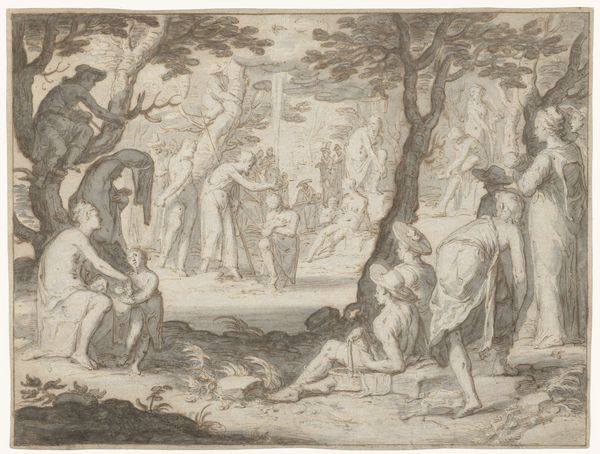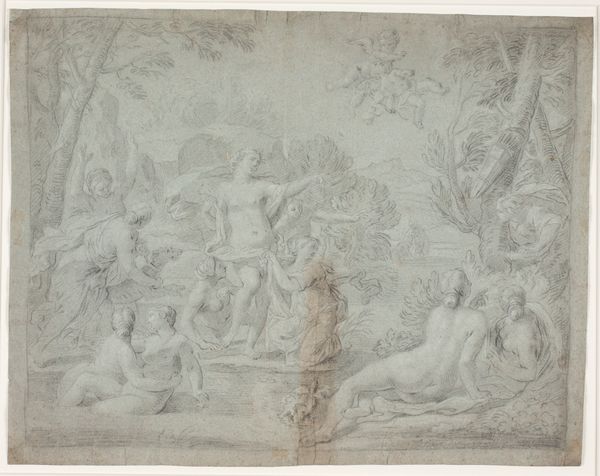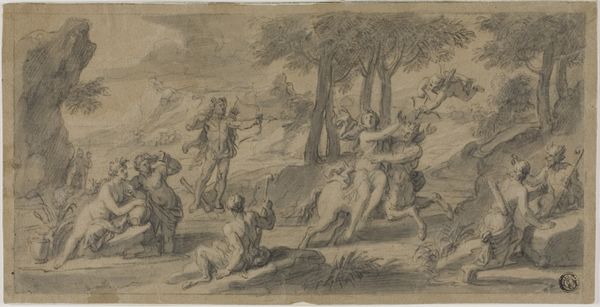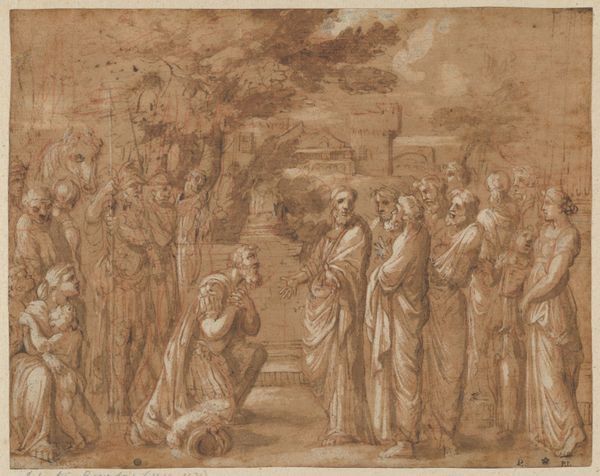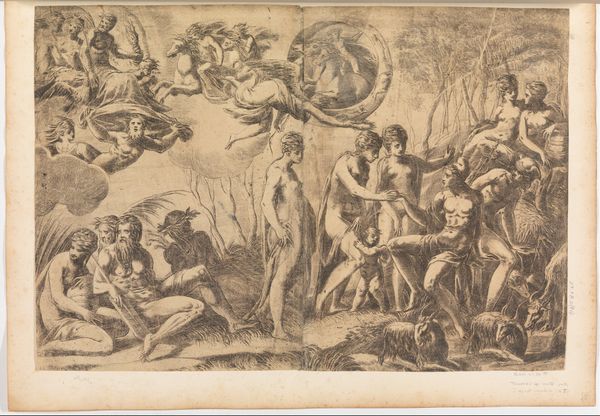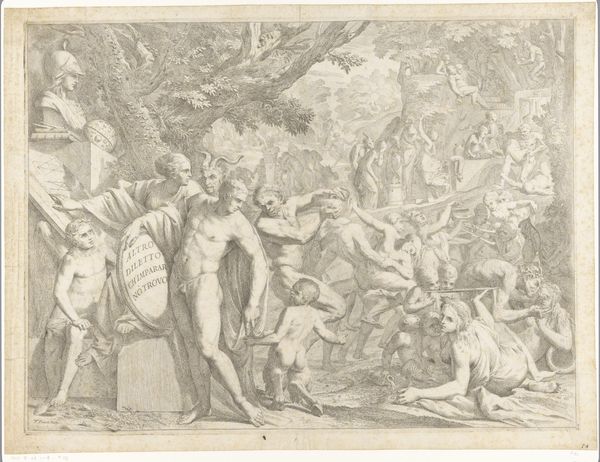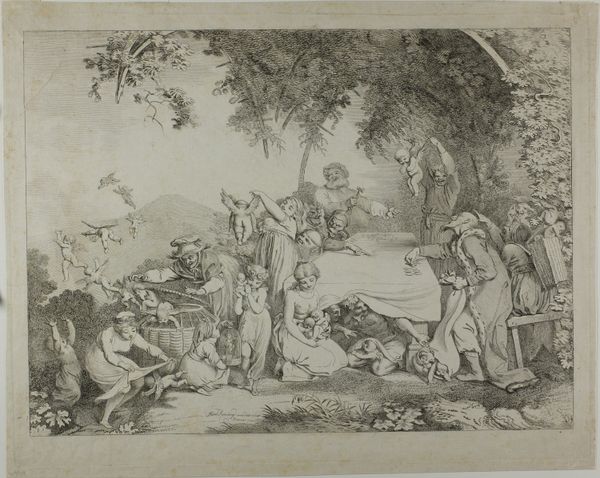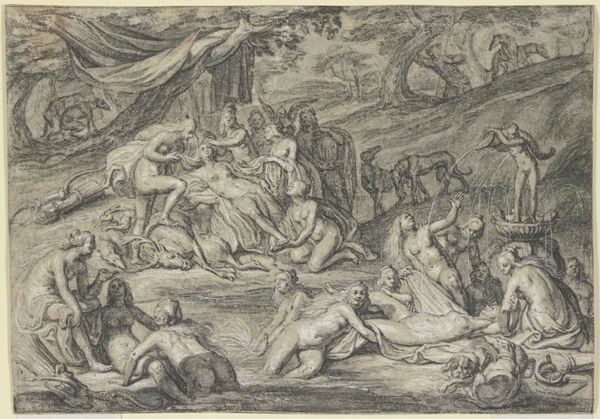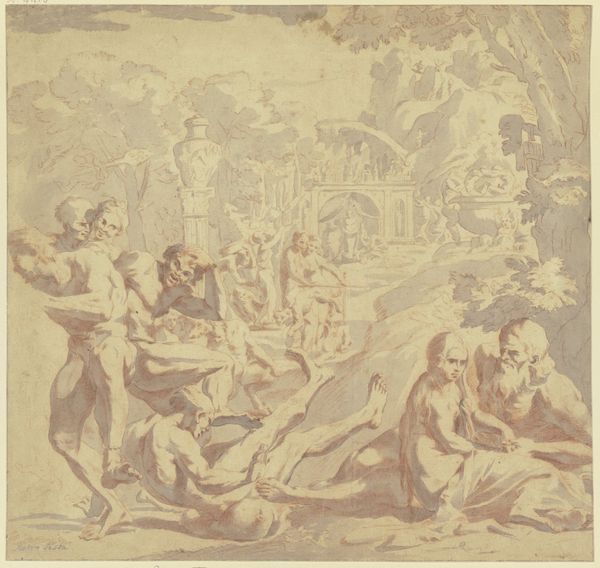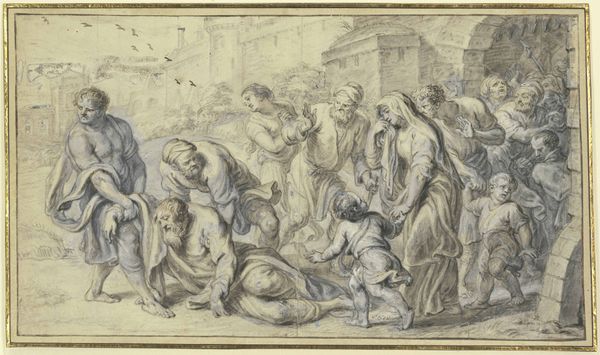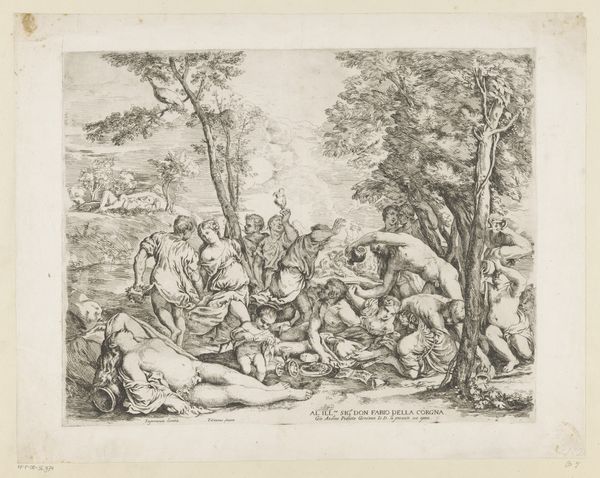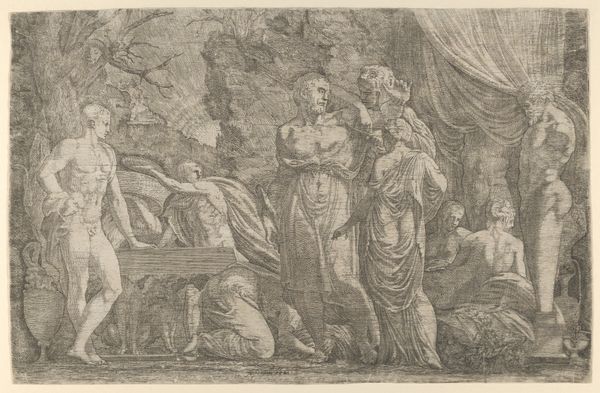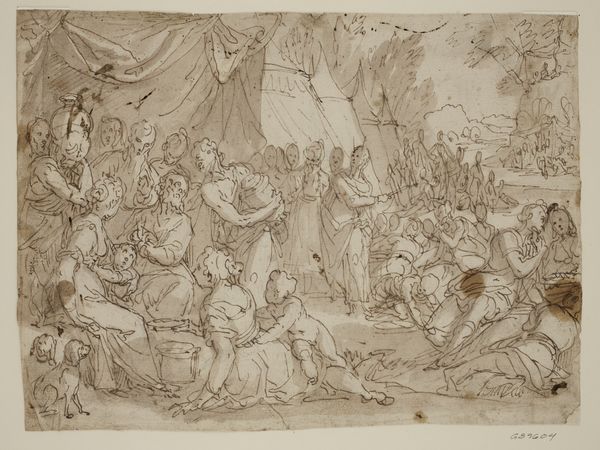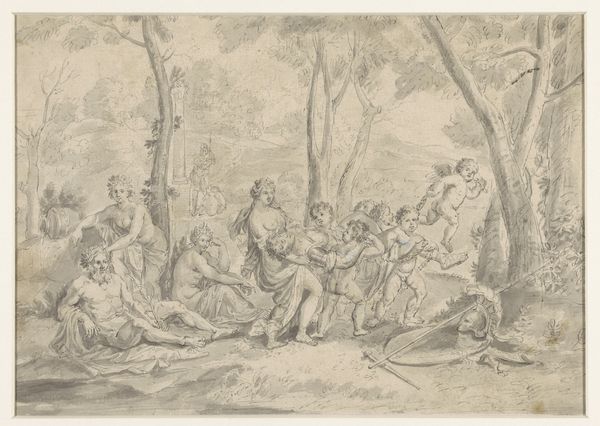
drawing, graphite, pen
#
drawing
#
allegory
#
ink painting
#
landscape
#
figuration
#
graphite
#
pen
#
history-painting
#
academic-art
Dimensions: 10 1/2 x 17 15/16 in. (26.67 x 45.56 cm) (sheet)11 9/16 x 18 5/8 in. (29.37 x 47.31 cm) (mount)
Copyright: Public Domain
Curator: This is François Verdier's "Apollo and the Muses," a drawing made sometime in the 17th or 18th century. It resides here at the Minneapolis Institute of Art. Editor: My first impression is of a tranquil, almost melancholic gathering. The monochrome palette and loose rendering lend it a dreamlike quality. Curator: Absolutely. Notice how Verdier arranges the figures. Apollo, at the center, is framed by the muses, creating a harmonious, balanced composition. The pen and ink work creates subtle tonal gradations to enhance this effect. Editor: This grouping is far from incidental. Apollo, as the god of music, poetry, and the arts, is seen here amidst the nine Muses, each representing different artistic disciplines. They're not merely decorative; they embody the intellectual and creative forces valued by the academies. The forest clearing is clearly coded as an artistic refuge. Curator: I agree. Verdier employs classical ideals—emphasizing clear lines, balanced forms, and a pyramidal structure—techniques that highlight a serene, idealized vision of artistic creation. Consider also the figures in repose that add complexity to the narrative depicted here. Editor: And what narratives are subtly communicated through pose. Those partially unclothed male figures reclining around the central muses invite some inquiry in regard to period aesthetics that idealized a Eurocentric and, shall we say, eroticized male body. I wonder whether Verdier intended an implicit discourse on male potency as tied to divine or intellectual pursuits. Curator: Verdier clearly looked to classical sources such as Raphael for formal inspiration. Ultimately, the scene's value exists within its structure, form, and materiality. Editor: Though the artistic establishment was certainly engaged with formal beauty and academic skill, such parameters can’t exist entirely removed from cultural context. Verdier invites conversations beyond surface aesthetics, conversations that consider art's relationship with the broader cultural landscape. Curator: Very well. "Apollo and the Muses," viewed from either lens, challenges our ideas about artistic interpretation. Editor: Indeed. A scene like this encourages us to revisit history, inviting an openness to multiple meanings beyond what may seem initially visible.
Comments
minneapolisinstituteofart almost 2 years ago
⋮
Among the Roman god Apollo’s alternate names were Dionysus, his Greek epithet; Phoebus, meaning “bright” and referencing his rule over the sun; and Musagetes, leader of the Muses. The Muses were goddesses of the poetic arts, all nine of them daughters of Jupiter (god of thunder) and Mnemosyne (goddess of memory). Apollo, center, appears here in his capacity as god of music, playing his lyre. At left, Apollo’s winged steed, Pegasus, is poised near the mythical spring Hippocrene, brought to life when Pegasus forcefully thrust his hoof into the ground. This spring, located on the Muses’ sacred Mount Helicon, was said to inspire poetry when its waters were consumed.
Join the conversation
Join millions of artists and users on Artera today and experience the ultimate creative platform.
